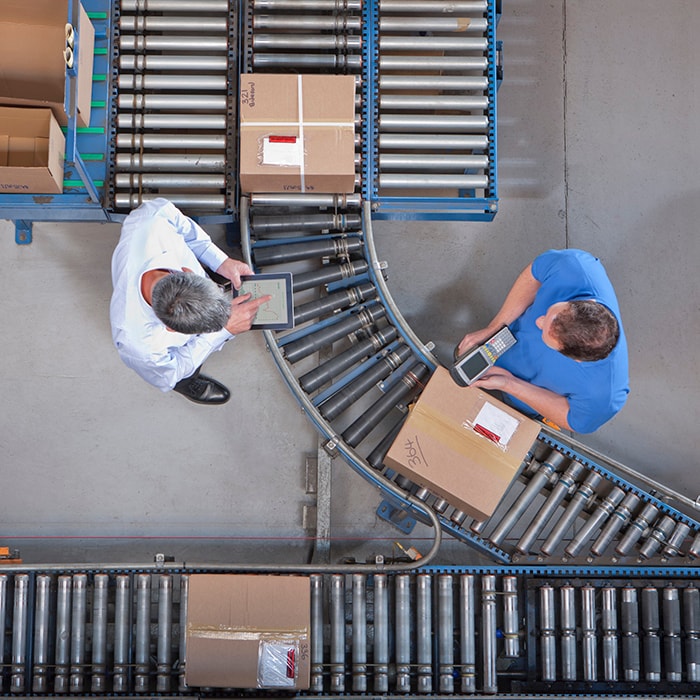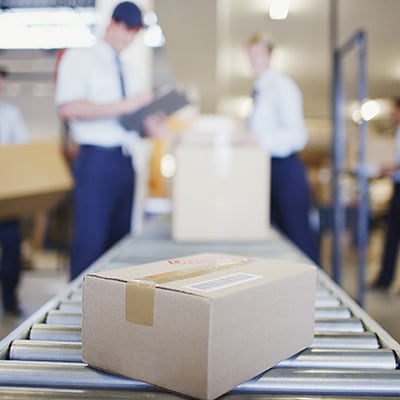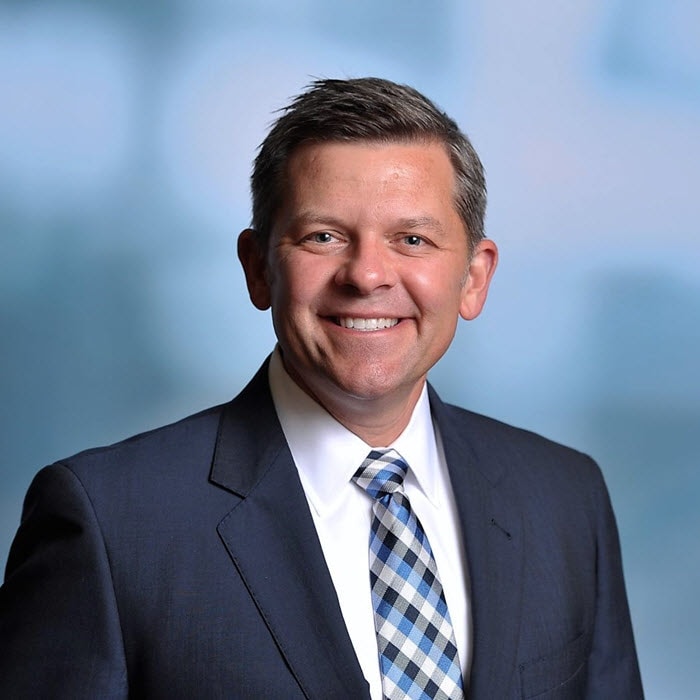Why urban fulfillment centers? has been saved

Perspectives
Why urban fulfillment centers?
How retailers are adapting to connected consumers
As we explore how the retail industry is adapting, we look at the need for urban fulfillment centers. Being able to serve the connected consumer in large metropolitan areas with same-day—or shorter—service can add significant revenue, improve the customer experience, and drive brand differentiation for leading e-commerce and omnichannel retailers.
Explore content
- Download the PDF
- Retailers: The pressure to deliver
- See now. Buy now. How fast can I get it?
- Are you lagging? Upgrade to an urban fulfillment center
- Changing economics of the urban fulfillment center
- The role of technology in driving same-day delivery
- Looking ahead to retail urban fulfillment
- Get in touch
- Join the conversation
Urban supply chains: Disrupting traditional retail
Some call it the “Amazon Effect.” Others attribute it to the e-commerce mind-set of “See now. Buy now. How fast can I get it?” Still others see it as an extension of the connected consumer’s need for 24/7 engagement.
Call it what you will, but one thing is clear: The bar has been raised for home-delivery options. By 2023, same-day delivery will be the norm for most e-commerce purchases. Nowhere is this expectation more apparent than in large metropolitan cities, with their high concentration of millennials, high-end consumers, and dual-income families. Roughly three-quarters of urban shoppers have bought products on their mobile device, and about half say that same-day delivery is important to them.
Retailers should adapt to keep pace with the industry leaders—or chance being left behind. But to succeed, a different mind-set and supply chain model (including new, urban supply chains) is likely needed. The traditional retail distribution model, consisting of a macro hub with spokes, should evolve, bringing inventory closer to the consumer. Developing an urban distribution center, coupled with local delivery vehicles, can lead to a sustainable, profitable logistics model for large urban markets. Helping to enable the strategy is a delivery model leveraging the gig economy with fast, savvy, and scalable crowdsourced delivery services.
Retailers: The pressure to deliver
The dominance of Amazon and other giants has fundamentally transformed retail and disrupted the logistics of delivering products to customers. Since Amazon was founded in 1995, the company has slashed expected shipping times—and now it’s poised to reduce shipping times even more. Amazon is rapidly making two-day, free-delivery service the standard. Prime Now services are offering free, two-hour delivery on household items and essentials. This approach raises the bar on service to millennial consumers, 71 percent of whom are Amazon Prime members and live in urban areas.
Meanwhile, e-commerce and mobile continue to gain traction, particularly in urban markets and key population segments. In the third quarter of 2018, e-commerce sales totaled $121.5 billion, representing 9.8 percent of all retail sales, up 14.3 percent from the third quarter in 2017. And more and more of those sales are being made on smartphones. In three years, from 2014 to 2017, the number of purchases made via smartphone rose 70 percent. Among high-income consumers, 52 percent are choosing to shop online, while 76 percent of millennials prefer home delivery to other delivery options.
Many large corporations have recognized the need for an urban fulfillment strategy. While each player is approaching the problem differently, they all recognize the importance of bringing their goods closer to the biggest urban markets in the United States.
See now. Buy now. How fast can I get it?
Consumers increasingly are guided by the mantra, “See now. Buy now. How fast can I get it?” That chant is the essence of the omnichannel retail experience.
Same-day capability increasingly plays a key role at critical points in the customer journey:
- Fifty-eight percent of consumers say that the ability to search for items that are available for same-day delivery matters to them when buying products online.
- Sixty-four percent of online consumers expect orders placed by 5 p.m. to qualify for next day delivery.
- Sixty-one percent of online shoppers expect orders placed by noon to qualify for same-day delivery.
With same-day spend projected to grow at a 25.3 percent compound annual growth rate between 2016 and 2022, retailers will have to build that capability if they wish to compete.
These trends have been apparent in large metropolitan cities, with their concentrated populations of millennials, high-end consumers, and dual-earner families:
- Seventy-four percent of urban shoppers have purchased products on their mobile device—in contrast with the rest of the United States, where 51 percent of adult Americans report making an online purchase on their smartphone.
- Forty-five percent of urban shoppers believe physical store, same-day delivery is important, as opposed to 34 percent of suburban shoppers.

As customer expectations rise, so does the need for more warehouse facilities—something that has almost vanished from the urban landscape as older warehouses have been torn down or repurposed. Now, developers are scrambling to satisfy demand for modern, retail urban fulfillment centers that provide customer value over and above traditional inventory warehousing needs.
Are you lagging? Upgrade to an urban fulfillment center
But while many retailers recognize the importance of “see now” and “buy now,” the final component—“How fast can I get it?”—remains a struggle.
Retailers have tried responding: 47 percent invested in logistics services in 2017, which is up from 42 percent in 2016. But those investments aren’t nearly enough. Consequently, they have been leveraging their existing-store infrastructure, with same-day and next-day delivery being fulfilled from stores by sales associates doing double duty: serving customers and fulfilling same-day orders.
This fulfillment approach has often led to inefficiencies and a poorer consumer experience inside the store. Buy online and pick up in store is another option that retailers have tested, and it’s working to a degree. But leveraging store inventory and store associates can have a higher cost of fulfillment. It also erodes the profit from a strategically planned urban fulfillment node.
One solution is to bring the fulfillment center closer to the end consumer so that items and products can be delivered effectively and efficiently, same day or next day. However, the high costs of purchasing real estate, building a state-of-the-art warehouse and fulfillment facilities, creating an urban transportation infrastructure, and developing an urban delivery services network commonly have held retailers back.
But with crowdsourced delivery services and technology tying together and enabling those services, you don’t have to be a Fortune 50 retailer to compete. An urban fulfillment center can allow products to be delivered same day or next day—and at a lower cost to service.

Changing economics of the urban fulfillment center
Until recently, the conventional wisdom held that it was more economical to concentrate inventory in a central hub-with-spokes reaching out. That truism no longer holds, given that:
- Consumer expectations are rapidly changing.
- Same-day availability influences shopping decisions and large metropolitan cities are at the vanguard of the surge in e-commerce.
- Large fulfillment centers located outside the city core, or in other parts of the United States, are typically no longer viable if retailers are to meet the evolving demands of customers.

“Aren’t the costs of having an urban fulfillment center in the Bronx much higher than outside of New York City?”
Real estate and labor are more expensive in the Bronx (as opposed to outside the city). But when considering the last-mile delivery costs, the total cost to serve is less when the fulfillment center is in the Bronx. And it’s at least 22 percent more cost-effective to serve the same multibillion-dollar e-commerce demand in NYC due to higher transportation costs from locations outside the city.
The role of technology in driving same-day delivery
Geography alone doesn’t tell the whole story. Rapid technology advances have enabled the urban logistics model. Thanks to the rapid convergence of the automotive, communications, and technology industries, a robust ecosystem has sprung up around logistics and fulfillment. The ecosystem is wrapped around an expanding shared-services economy based on capacity utilization—this makes same-day delivery and multi-hour fulfillment possible. It’s the same ecosystem that has given rise to Uber and Airbnb, which have disrupted the taxi and hotel industries. Technology-based crowdsourcing networks consisting of independent, local contractors capable of same-day delivery are disrupting the old ways.
Telematics technology is also advancing, particularly as new delivery startups enter the last-mile logistics services market. Software is expected to represent $8.2 billion of the total telematics market, which is expected to exceed $10 billion in 2026. Companies like Deliv, Homer, and Bringg combine cutting-edge technology, route optimization, and operational expertise for businesses looking to leapfrog and compete with Amazon’s same-day shipping service.
The new startups are often also providing greater visibility throughout the entire process to the consumer and the retailer. This visibility enables consumers to participate in the journey of the item, plan accordingly, and make changes when necessary, and it allows retailers to manage orders and inventory more efficiently.
Gain powerful visibility into your digital supply network
Explore SupplyPRISM™
Looking ahead to retail urban fulfillment
It’s important for retailers to strategize and think ahead. Thinking about the next quarter isn’t enough. In a relatively short space of time, consumer delivery expectations have risen.
To compete in the urban landscape and to have a presence in an urban market such as New York City, retailers should solve the last piece of the e-commerce triangle: last-mile delivery. It means looking at an urban supply chain, understanding how it should operate as the mobile consumer evolves, and figuring out how to fulfill their quest for “How fast can I get it?”
Looking forward, retailers should consider urban fulfillment from a total cost perspective. While now it may appear expensive to establish a mini hub or a distribution center in an urban area, providing next-day or two-day delivery from a regional or national hub located hundreds of miles away isn’t likely sustainable. Longer term, the total cost to deliver can be lower with a node in an urban market.
The value of the local urban fulfillment center goes beyond improving quality of service for customers. Currently, out-of-stock inventory leads to retailer losses of more than $144 billion annually. Moving the fulfillment center closer to the consumer allows retailers to create greater efficiencies: Same-day delivery to stores in smaller vehicles that can be driven without a commercial driver’s license can enable stores to replenish high-volume SKUs. This allows them to shift inventory and removes the need for backroom storage. Through this approach, stores can be utilized to create experiences for consumers and build brand loyalty.
The time to act is now. Retailers should adapt and keep pace with the industry leaders. They should conduct their own due diligence to understand the benefits of a retail urban supply chain and customer experience based on their inventory stocking and replenishment strategy, SKU assortment, distribution network, and retail and direct-to-consumer fulfillment strategy.
By establishing urban nodes, retailers can move merchandise closer to customers, capitalizing on population density. And by adopting a shared-services model and leveraging a crowdsourced labor pool of local, nonprofessional couriers connected via mobile to deliver products to the consumer, retailers can shift supply chain dynamics and drive down the costs of same-day and multi-hour delivery.

Explore content
- Download the PDF
- Retailers: The pressure to deliver
- See now. Buy now. How fast can I get it?
- Are you lagging? Upgrade to an urban fulfillment center
- Changing economics of the urban fulfillment center
- The role of technology in driving same-day delivery
- Looking ahead to retail urban fulfillment
- Get in touch
- Join the conversation
Recommendations
Effective pricing strategies during inflation for consumer companies
Measures to control inflation can drive growth over time



